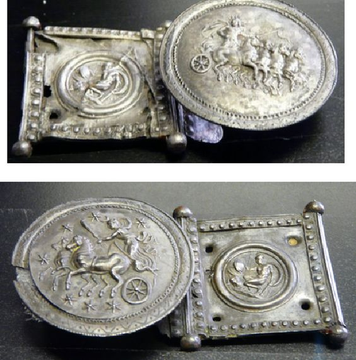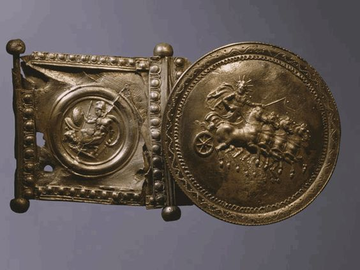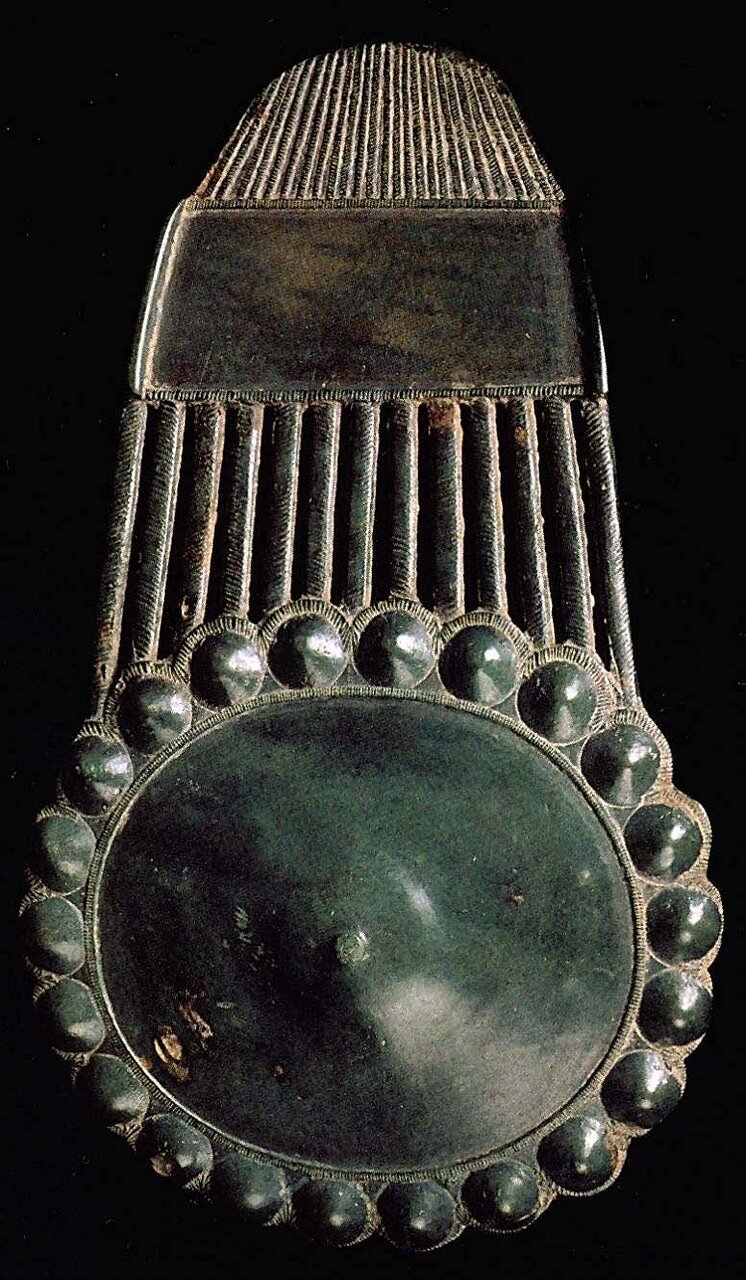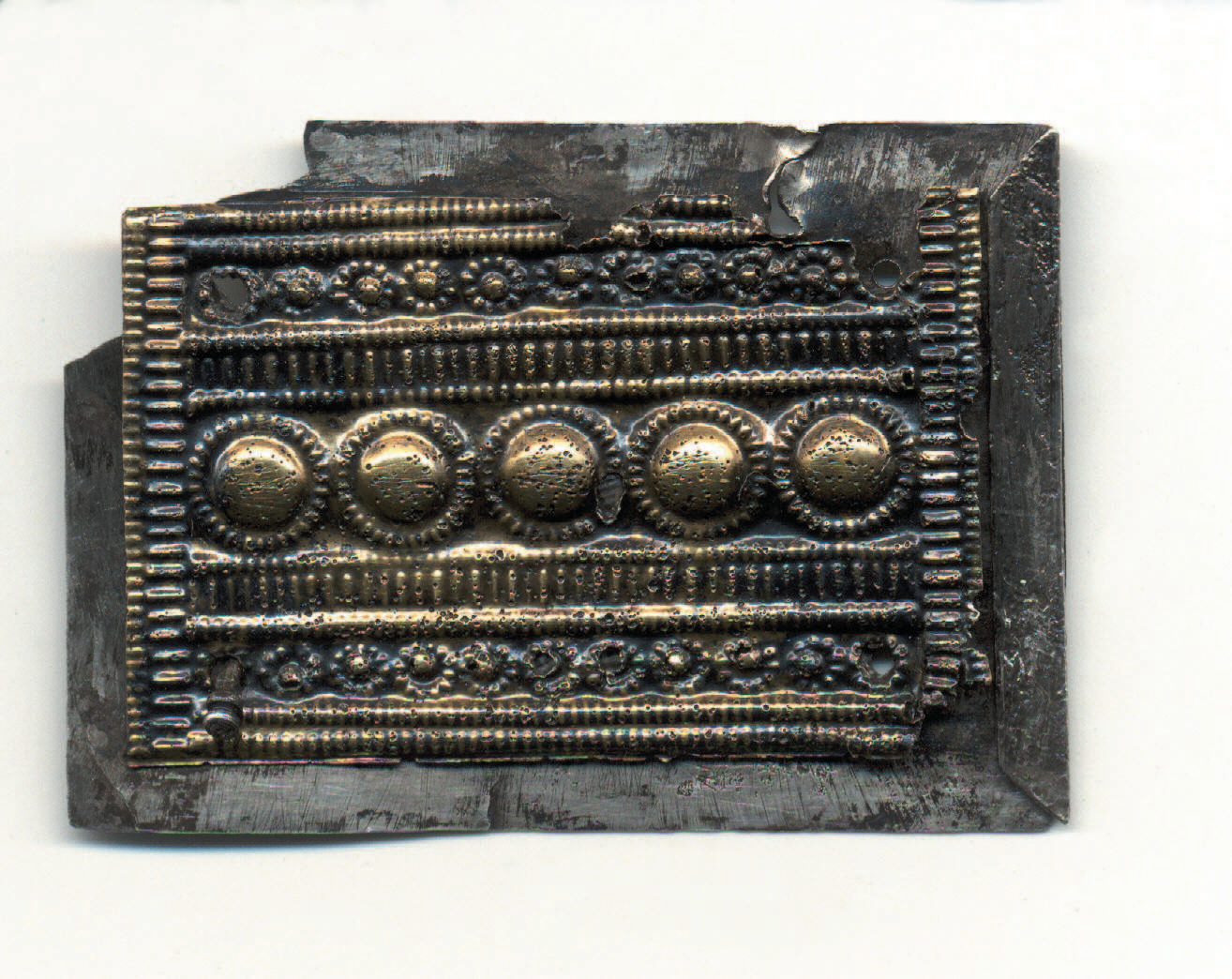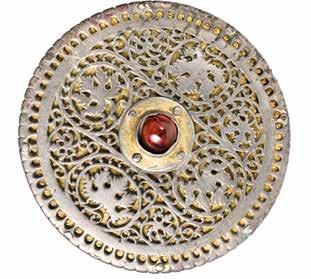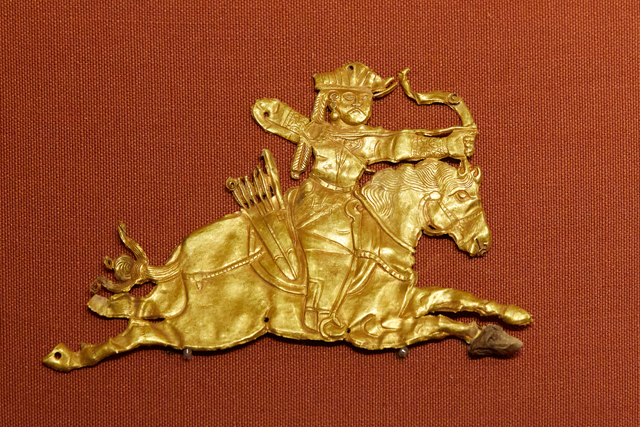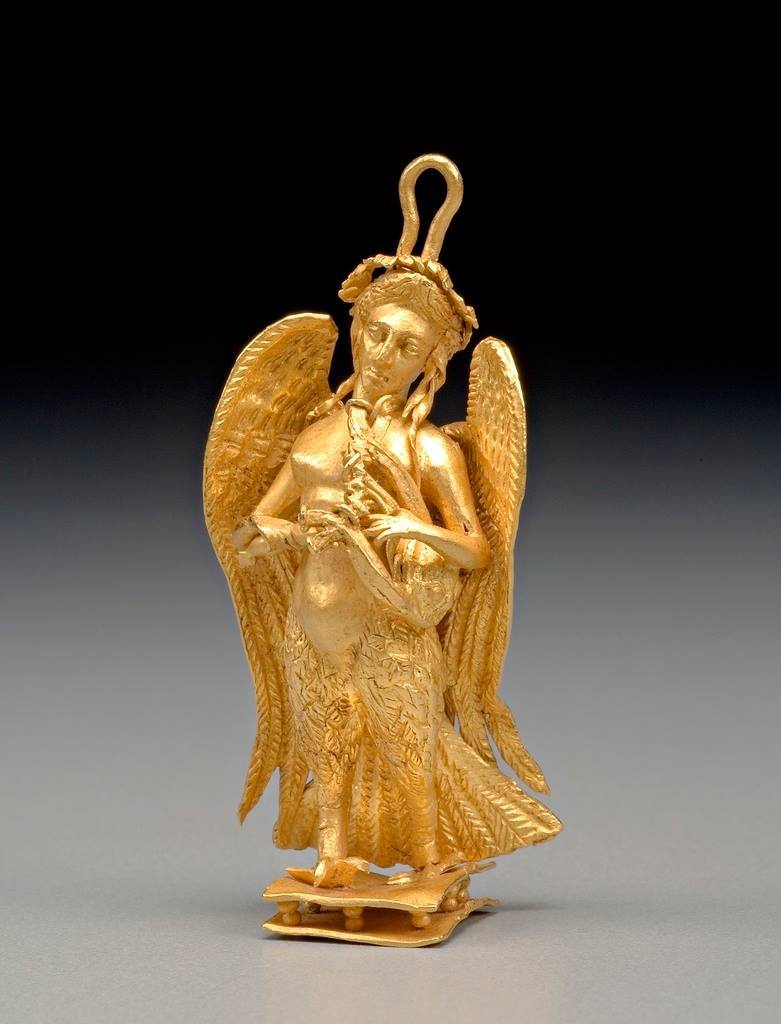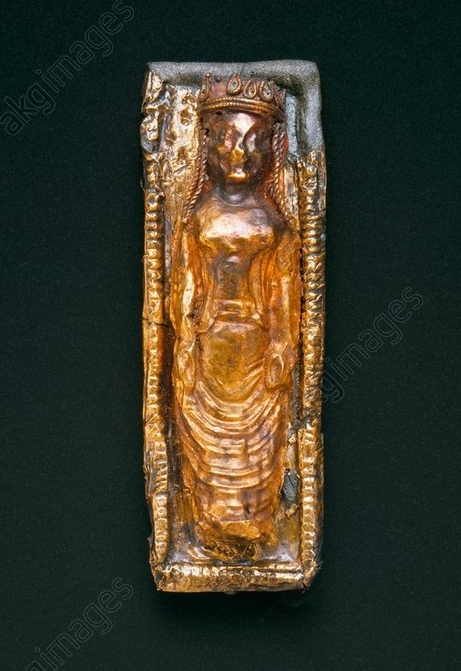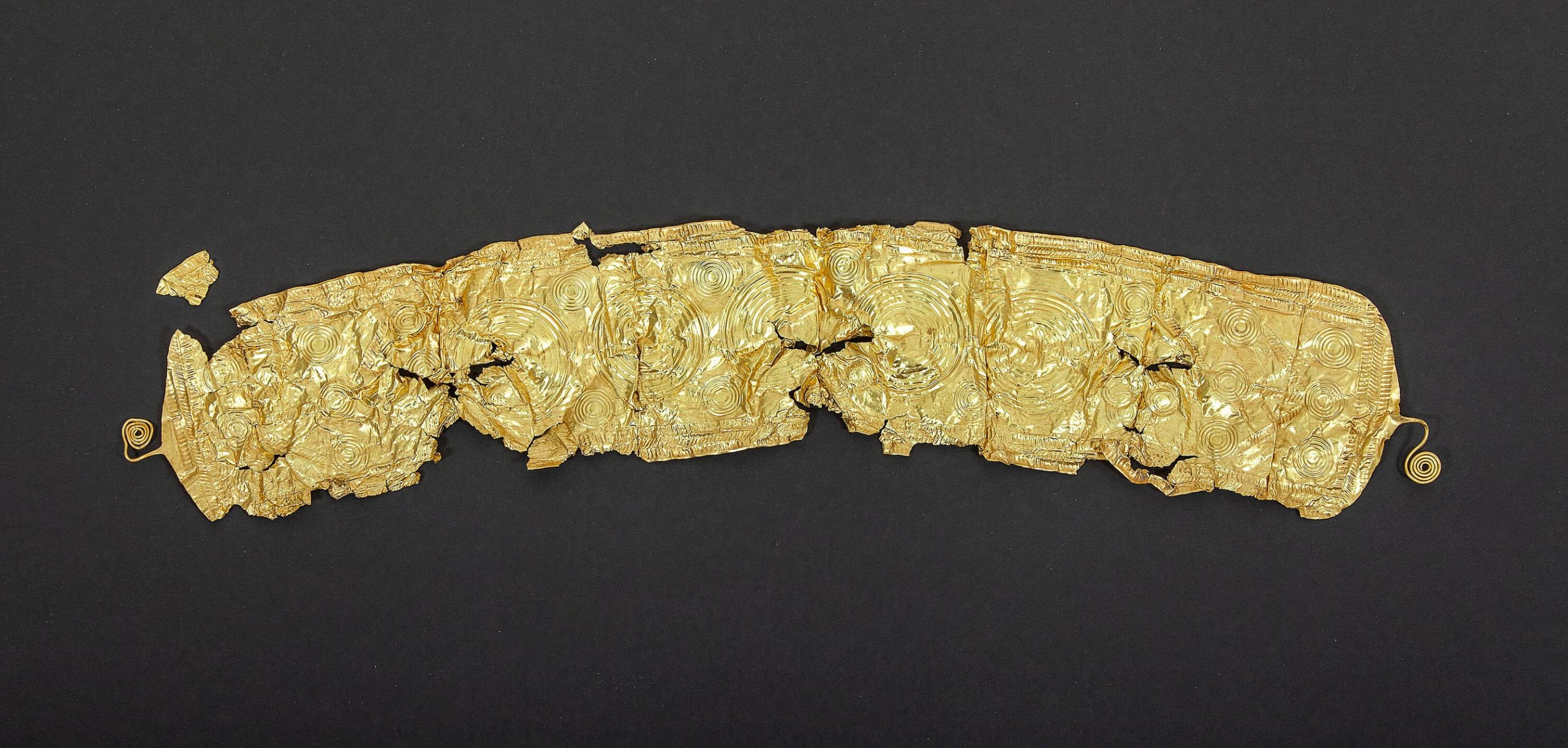A ROMAN REPUBLICAN OPENWORK BELT PLATE FROM A SANCTUARY GURZUFSKOE SEDLO [Crimea]: THE PARALLELS TO CASTILLEJO FINDS
Maria V. Novichenkova
https://www.researchgate.net
“A paper is devoted to a rare find of a Roman bronze openwork belt plate with the preserved skin residues found in a mountain sanctuary Gurzufskoe Sedlo together with the items of the Roman military equipment principally dated by the Late Republican – Early Principate periods. It’s finding in a barbarian sanctuary along with the items of Roman Republican equipment is associated with the participation of Tauri tribes in the military actions against Rome in the Black Sea region during the first half of a 1st century BC. It is possible to study the features of the construction and decor elements of an item due to a good state of its preserve.”

101, 102).


Belt plate, 2nd C, Roman Slovenia
Metal analysis with PIXE: The case of Roman military equipment https://www.researchgate.net
The partially gilded silver belt fitting with relief
decoration found in the River Ljubljanica https://www.nms.si
The Early Roman “Hoard of Vrhnika”: A Collection of Finds from the River Ljubljanica
https://www.researchgate.net
replica https://www.domusartificis.com/en/prodotto/fibbia-con-placca-di-ljubljanica-in-bronzo/
“The belt-plate is very well preserved. It is rectangular, almost square, and relatively massive, made by hammering. The surface is covered by a thin layer of dark grey patina. Its silver sheet is less than a millimeter thick and rolled over along the vertical sides to form a 3–4 mm wide tube on each side. A pin (axis bar) is inserted in each of the tubes and has a solid spherical terminal (c. 6 mm wide) at both ends. The tube and pin form a tubular hinge with a merely decorative function (pseudo-hinge). The line (of contact) of the rolled-over sheet is covered with an approx. 4 mm wide and 1 mm thick strip of sheet silver decorated with a line of tiny chased circles on the inner and a wavy line on the outer side.
The central part of the belt-plate has a round field framed with a shallow, roughly 2 mm wide groove.
The decoration on the field is embossed from the back and chased from the front. It consists of symmetrical plant motifs: two broad acanthus leaves, each forming a calyx, four narrower leaves and six buds. The background is chased with tiny circles. The centre of the field holds another, smaller field bearing a rosette with eight petals, fastened to the plate with a spherical headed rivet.
The gilding is clearly visible on the central, chased part of the belt-plate. Examinations under a microscope also revealed traces of gilding on the relief petals of the rosette, the narrow leaves, one of the broad acanthus leaves and on both strips at the pseudo-hinges (in the punched dots and along the wavy lines). PIXE measurements confirmed gilding on the background chased with tiny circles. The gilding traces elsewhere were either not measured or the measurements were taken in places where gilding has not survived.1089 This leads us to conclude that gilding was applied to the front of the plate in parts only. The combination of gilding and the shiny silver surface only enhanced the decorative effect. The gilded center was balanced by the gilded strips at the sides. All decoration is skillfully executed and indicates high-quality craftsmanship.
The plate was fastened to the leather of the belt with four symmetrically positioned silver rivets, two of which survive, while the positions of the other two are indicated by holes (3 mm in diameter). The surviving rivets have approx. 6 mm wide spherical heads that are slightly larger (diam. 7 mm) than the terminals of the axis bars in the pseudo-hinges. The length of the rivet shanks shows that the leather strap of the belt was approx. 4 mm thick.
The plate and the rivets are of silver alloy with at least 95% silver.”
pp. 340-342 ROMAN MILITARY EQUIPMENT FROM THE RIVER LJUBLJANICA, Janka Istenič


The chest ornament of a parade horse harness in Vienna.
Roman, 4th/5th century, gilded silver.
The belt consists of medallions connected alternately with a lion’s head, an eagle figur, and double pelta ornaments.

The Esquiline Treasure is an ancient Roman silver treasure that was found in 1793 on the Esquiline Hill in Rome. The hoard is considered an important example of late antique silver work from the 4th century AD, probably about 380 for the major pieces.[1] Since 1866, 57 objects, representing the great majority of the treasure, have been in the British Museum. source >>
The Esquiline Treasure: The Nature of the Evidence Kathleen, J. Shelton
https://www.jstor.org/stable/504777
https://www.academia.edu/25547275/The_Esquiline_Treasure

